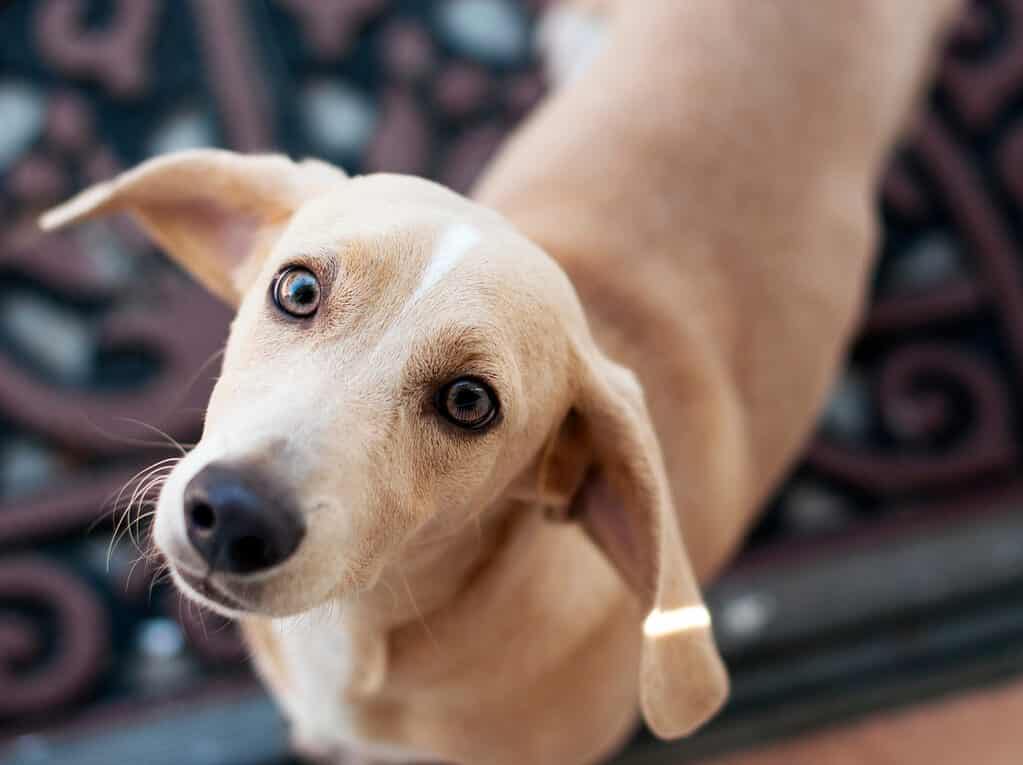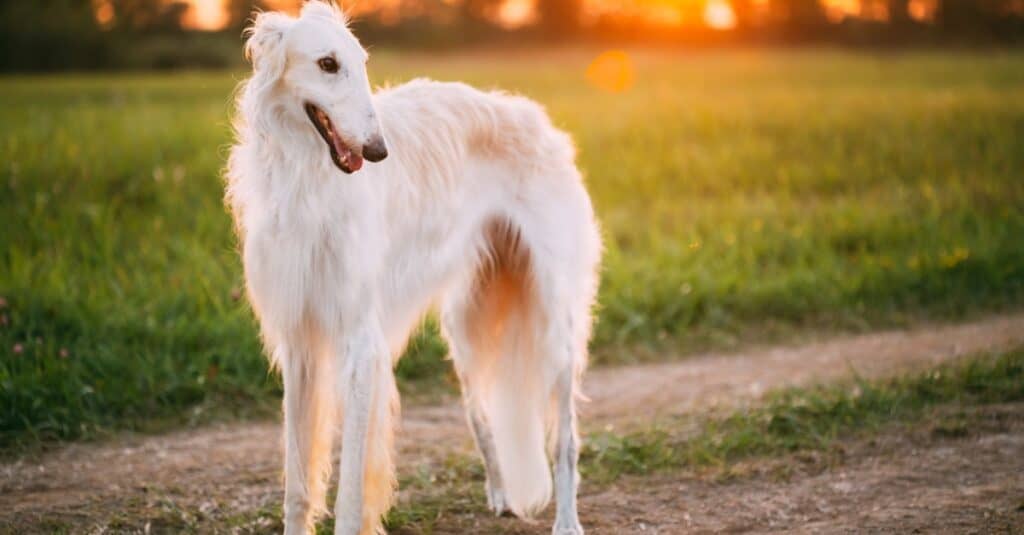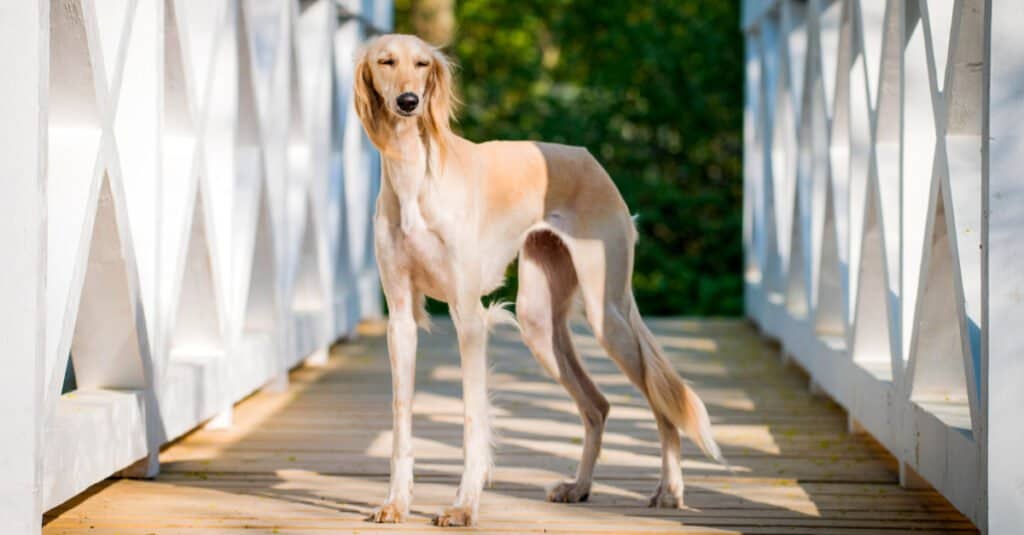It can be difficult to find the right dog if you live alone and work outside the home, as many breeds just aren’t suited for this lifestyle. You might be wondering, what breeds can be safely left alone?
The best dog breeds that can be left alone are those that are independent, rather than bred to work alongside humans. They’re also relatively low energy and able to calm down after getting tired out. Don’t leave any dog breed alone for more than 4-6 hours on a regular basis.
In this article, we’ll discuss how long dogs can be left alone, and the five best dog breeds that can be safely left alone.
No Dog Should be Left Alone for More than 4-6 Hours

Dogs should not be left alone for more than four to six hours.
©Karen Dole/Shutterstock.com
Generally, it’s important to know that there isn’t a dog breed suited to being left alone all day. While some people leave their dogs for an entire work day, this isn’t advised.
The first reason for this is that dogs shouldn’t be expected to hold their bladders for long periods. Most adult dogs can hold it for 8-12 hours when pressed, but holding it for this long all of the time can cause health problems like urinary tract infections (UTIs). It’s better for them to empty their bladder every 4-6 hours instead.
It’s also not fair to a dog to expect them to go without attention or exercise for longer than 4-6 hours.
So, what do you do if you want a dog but work full-time outside the home? Here are some tips!
- Adopt an adult dog, not a puppy. When you adopt a two-month-old puppy, it needs to potty around once every two hours. This gradually increases as the puppy ages (three-month-old puppies can hold it for three hours, four-month-old puppies for four hours, etc.).
Puppies also need a lot more attention, training, and short bursts of exercise than adult dogs. They’re just not compatible with families who are gone most of the day. - Have someone else in the family care for them. The ideal home for any dog breed is a family who is home most of the day, such as partners who work different shifts.
- Hire a dog walker or pet sitter. Another option is to hire someone to come around halfway through your work day to care for your dog. This breaks things up so your dog isn’t alone for more than 4-6 hours, and they get exercise and a potty break.
You can also ask friends or family to drop by if they’re willing. - Consider your commute. If you work an hour away from home, this means your dog is left alone for the length of your shift plus two extra hours. On the flip side, if you work five minutes from home, you might be able to come home on your lunch break, meaning your dog doesn’t have to be alone the entire day.
- If you work overtime, reconsider adopting a dog. Sadly, not everyone can care for a dog properly. If you frequently work overtime and no one else is home, it’s best to wait until you’re in a better position to adopt.
5 Dog Breeds That Can Be Safely Left Alone
Now that we’ve talked about how no dog should be left for more than 4-6 hours, let’s get into some breeds that have an easier time being alone.
When determining these breeds, the following traits were examined:
- Independent, rather than clingy
- Laid back, rather than hyperactive – there are high-energy breeds on this list, but none of the extremely high-energy breeds that need to be occupied most of the day.
- Not bred to work side-by-side with humans or in a pack of dogs.
- Not bred to be lap dogs, as these breeds tend toward clinginess and are prone to separation anxiety.
Remember that it’s best to adopt an adult dog who’s used to being home alone. If you’d like your dog to also be lower-energy, adopting a senior is your best bet!
Avoid adopting a puppy, as they can’t be safely left home alone. They’ll have accidents, get bored, and will likely be destructive.
1. Greyhound

Make sure to adopt an adult greyhound that is used to being left alone.
©Eve Photography/Shutterstock.com
Greyhounds are large dogs that stand 27-30 inches tall and weigh 60-70 pounds. These dogs are sighthounds, which means they were bred to hunt using their sense of sight. Their lithe frames were bred for sprinting, so they need a large, enclosed space to run. Greyhounds are prone to chase and shouldn’t be off-leash in an unenclosed space.
These dogs are high-energy and need daily walks, but it doesn’t take a ton of activity to tire them out. They’re content to spend much of their days lounging on the couch.
Often compared to cats, greyhounds can also be quite independent and even aloof. They can be trained with patience and positive reinforcement.
Make sure to adopt an adult greyhound that is used to being left alone. As discussed above, puppies cannot be left alone for long. Some adult greyhounds have separation anxiety as well, so talk with the rescue or shelter to ensure they’re the right fit for you.
2. Borzoi

The Borzoi is one of the tallest sighthounds and sport a unique wavy coat.
©Grisha Bruev/Shutterstock.com
Borzois are giant dogs at 26+ inches tall and 60-105 pounds. The Borzoi is another sighthound breed that tends to be independent enough to stay home alone without issue. They’re also quite laid-back and can chill in the house while you’re gone so long as they get enough exercise throughout the rest of the day.
Sighthounds are also quite sensitive dogs. They’re known for being empathetic, and sensing people’s emotions. They aren’t well-suited to a chaotic or conflict-driven environment, but much prefer peaceful homes.
As a sighthound guardian, it’s important to know how to handle your emotions, as outbursts will affect them even more so than other dog breeds.
You’re unlikely to find a grown Borzoi up for adoption because this isn’t a very popular breed. This is good for the dogs because it means Borzois aren’t over-bred!
However, you may need to be prepared to adopt a puppy from a reputable breeder and not leave them alone for long periods at first. If you can’t do this, choose another breed from our list!
Another option is to follow sighthound rescue groups and wait, as a Borzoi might show up in one eventually.
3. Chow Chow

Chow Chows aren’t the best for first-time dog guardians.
©Flower_Garden/Shutterstock.com
Next on our list is the Chow Chow. These large dogs stand 17-20 inches tall and weigh 45-70 pounds.
Chow Chows aren’t the best for first-time dog guardians because they can be stubborn and aren’t good with strangers. Training and socializing your Chow Chow is important to avoid problem behaviors like aggression toward strange people or dogs.
But if you can handle this breed, they’re independent and medium-energy. Your Chow Chow will need around 40 minutes to an hour of activity each day, but the rest of the time they’ll be happy to stay inside and relax.
Chow Chows aren’t always the best with children or other dogs, but it depends on their personality and history. They don’t tend to be super playful or hyperactive, and they’re prone to guarding behaviors and tend to be wary of strangers.
The best Chow Chow for you will be a grown shelter or rescue dog who is used to being alone and doesn’t have separation anxiety.
4. Akita

The Akita is a protective, loyal breed.
©Tatyana Kuznetsova/Shutterstock.com
Akitas are large, fluffy dogs. They’re 24-28 inches tall and can weigh anywhere from 70-130 pounds.
These dogs are muscular and very protective. They don’t tend to get along with other pets and are often wary of strangers because they were bred to guard.
Despite their cute appearance, Akitas aren’t the right dogs for most first-time dog guardians. It’s vital that they receive proper training throughout their lives.
Akitas tend to be loving with their family, but aren’t typically clingy. They’re also quite playful when they aren’t studiously guarding you or your home.
While they can be laid back indoors when left alone, Akitas need plenty of exercise throughout the day to stay happy and healthy. They’re also smart dogs who need mental stimulation to keep them from becoming bored.
Like the other dogs on this list, adopt an adult Akita that suits your lifestyle. They shouldn’t have separation anxiety and should be accustomed to being left alone.
A senior Akita is recommended, as these dogs tend to need less exercise than young adult Akitas, and might do better in your home because of this.
5. Saluki

Salukis don’t do well with smaller pets like cats or small dogs.
©Sarune Kairyte/Shutterstock.com
Last on our list, Salukis are large dogs that grow up to 23-28 inches and weigh 40-65 pounds.
This is another sighthound breed, meaning they’re affectionate but not clingy, require plenty of exercise, and are content to laze around the house the rest of the day.
Salukis are sensitive and gentle. Despite their large size, this breed as well as the other sighthounds on our list tend to be good family dogs. Of course, dogs should always be supervised with children no matter what! It’s also important to teach your dog and your child how to behave around one another.
Also like most sighthounds, Salukis don’t do well with smaller pets like cats or small dogs, as they can see them as prey.
You can search for an adult Saluki at a breed-specific or sighthound rescue, but they’re a fairly rare breed in the United States.
Therefore, like with a Borzoi, you might need to be able to commit to the more demanding puppy days while your dog grows up. If you cannot do this, please consider another breed from the list!
Conclusion
We hope this list helps you find the right dog breed. Remember to look for dogs with independent nature and relatively low exercise needs, or the ability to stay calm after getting their daily exercise.
Avoid breeds that were bred to be lap dogs or very active, as these dogs won’t be happy when left alone.
It’s unfair to leave any dog alone for more than 4-6 hours regularly, though once and a while is okay. Keep in mind that your commute to work and after-work activities will also factor into how long your dog spends alone.
Lastly, be sure to adopt an adult dog rather than a puppy–or be committed to having someone at home to raise the puppy until they reach adulthood, and can be safely left alone.
Summary Of The 5 Best Dog Breeds That Can Be Safely Left Alone
| # | Dog Breed |
|---|---|
| 1 | Greyhound |
| 2 | Borzoi |
| 3 | Chow Chow |
| 4 | Akita |
| 5 | Saluki |
The photo featured at the top of this post is © iStock.com/DevidDO
Ready to discover the top 10 cutest dog breeds in the entire world?
How about the fastest dogs, the largest dogs and those that are -- quite frankly -- just the kindest dogs on the planet? Each day, AZ Animals sends out lists just like this to our thousands of email subscribers. And the best part? It's FREE. Join today by entering your email below.
Thank you for reading! Have some feedback for us? Contact the AZ Animals editorial team.






